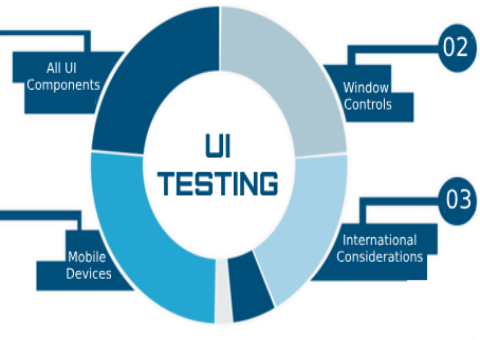Blog Details
- Home
- Pages

Asking customers about their opinions and ideas about a potential product or service before launching it on the market is a research technique called concept testing ux. So that you can make important decisions prior to the product launch, you can evaluate your market acceptance and buying readiness with the help of concept testing methods.
You can use it to check prices, product features, and even the ads you want to run, etc. You will avoid costly mistakes and become one of the lucky 5% who launch a successful product out of 95 % of failed product launches. Organizations and businesses use surveys to test concepts, making it an easy method
Fundamentally, the ultimate goal of concept testing is to determine whether buyers will actually purchase your product by observing how they react to it. By balancing features, cost, and usability, you are essentially asking users to design their perfect product. In order to sell downstream, we are acquiring information upstream.
Besides, concept testing can be applied at multiple stages of the product development process, such as during ideation, when prototyping, when defining marketing messaging, or just before the launch of the product stage.
Over the years, many different proof-of-concept methods have been developed and used by researchers. These methods are classified according to how concepts are represented. Each of these strategies is suitable for a particular type of research. Using a research platform makes it easier to test the concept. So, here are the four primary methods of concept testing:
Respondents receive two or more concepts during comparative testing. Respondents compare these concepts by rating or ranking questions, or simply choosing the best of the concepts presented.
Comparative tests give clear and understandable results. Determining which concept is better is not difficult. However, the results are out of context. It is impossible to know why respondents prefer one concept to another. Before you successfully release a product, it is very important to understand these details.
In this concept testing method, the target audience is divided into many groups in a monadic test. Each group gets only one concept. These exams focus on a thorough analysis of a particular idea. A monadic test poll is often short and focused.
Monadic test polls are short and allow researchers to ask a few clarifying questions. As a result, the answers provide a better explanation for why one concept is superior to another. However, since the target audience is divided into several categories, the sample size required to conduct a monadic test is large. Since several concepts need to be tested, the sample size is more important. Research costs rise sharply as the sample size increases.
Since each group of respondents sees a different concept, it is possible to go into great detail without making the survey too long. Researchers can ask clarifying questions about many of the characteristics of a concept, such as what they like about it, its appearance, price range, and so on. Although each group of respondents see different concepts separately, the follow-up questions for each concept will be the same.
Sequential monadic tests, like monadic tests, divide the intended audience into different groups. Instead of presenting one concept at a time, each group gets them all. Thus, to avoid bias, you randomize the order of the concepts. In addition, to obtain additional information, you will ask the respondents an identical set of clarifying questions on each of the topics.
A sequential monadic test only needs a small target audience because every group of respondents sees every notion. In one round, several ideas can be examined. Sequential monadic tests are therefore less expensive and simpler to implement. This test of concept approach is appropriate for research with a tight budget or with a small target audience.
If each group of respondents is presented with all concepts, the questionnaire is very long. This affects the percentage of completion and may cause a non-response bias. Limiting the number of questions allows researchers to shorten the length of the questionnaire. This, however, affects the depth of the collected ideas.
Other biases, such as interaction bias or similar, can affect sequential monadic testing results.
The sequential monadic test is followed by a comparison test in the protomonadic test. Respondents are asked to explore numerous concepts before choosing the one they like.
This design is useful for checking the results of successive monadic tests. Researchers can also determine if the idea chosen in the comparison test is consistent with the information collected about each concept.
Once you’ve decided on a method, you’ll need to create a survey to take the test. Creating a poll and then using a block randomizer gives the best results. The next section will look at criteria and best practices for designing an effective concept testing survey.
Idea testing can be costly and truly time-consuming, and they might not provide you with the precise information on solution you need to continue working on your project. The main issue with idea testing is by far this. For most firms, it is a challenging procedure due to the expense in terms of time, energy, money, and managerial resources.
Proper concept testing involves dissecting your idea and evaluating each component to see if it will work.
Think about the following advice as you draft your concept testing survey questions to assist you get pertinent and useful customer input.
Clearly state your concept research’s purpose. Before developing any questions, it is crucial to specify the intention of your concept research. The type of questions and information you include in your survey will depend on whether or not you have clearly defined objectives.
Select the concept testing strategy that best fits your research. Concept testing uses a variety of approaches, and you must choose the one that will best help you achieve your goals. Use a single concept evaluation if you want responders to assess a single item or topic thoroughly.
Concept method selection should be used, nevertheless, if you need input on comparing two or more concepts. You might employ numerous techniques, and you should assess each to determine which is ideal for evaluating your problems.
Concept testing is ultimately used to make sure that ideas are compelling enough to result in purchases. As a result, it’s crucial to include questions about your target market’s propensity to buy your product or service.
It’s better to test concepts across the whole product lifecycle continually. Idea testing is crucial for products at all phases of development. It should be done at every stage of the product lifecycle, not only before a new concept is introduced. This makes it possible for your business to make wiser judgments that will satisfy your target market.
Get opinions from a big audience. You might have a rough concept of who your target market is, but you will know for sure once you’ve gotten feedback from a wide range of people. After gathering input and determining the target demographic, you can tailor or improve your concept with this segment (or these segments) in mind.



Comments (00)